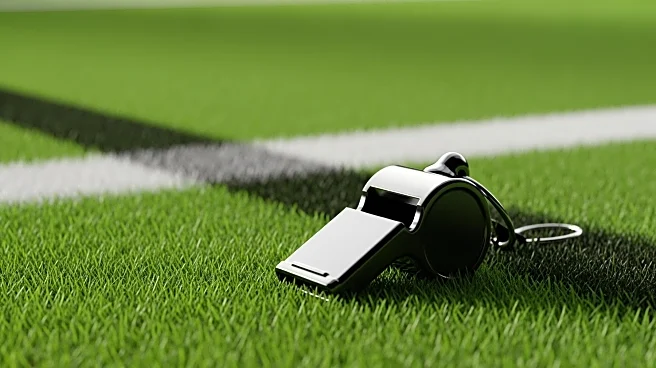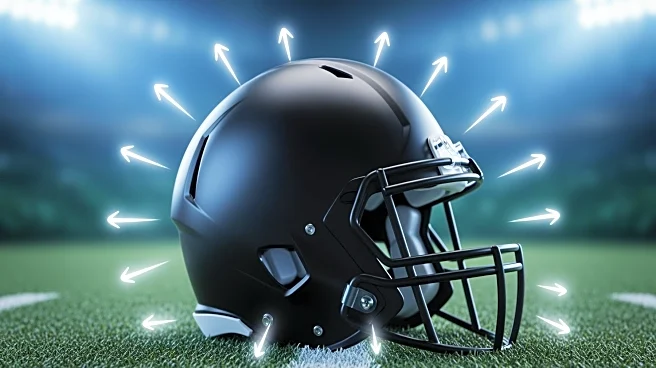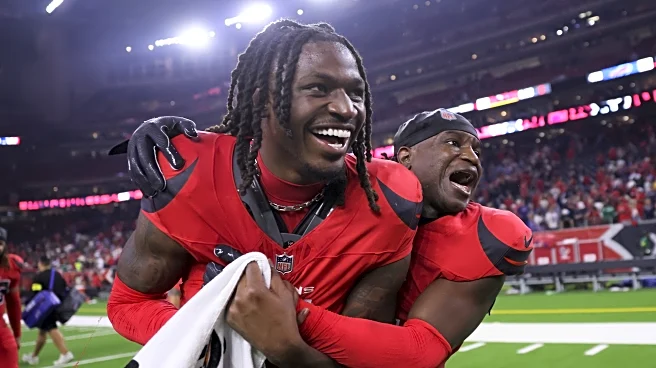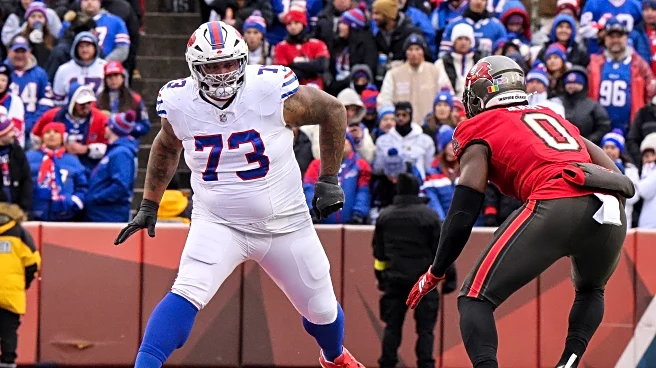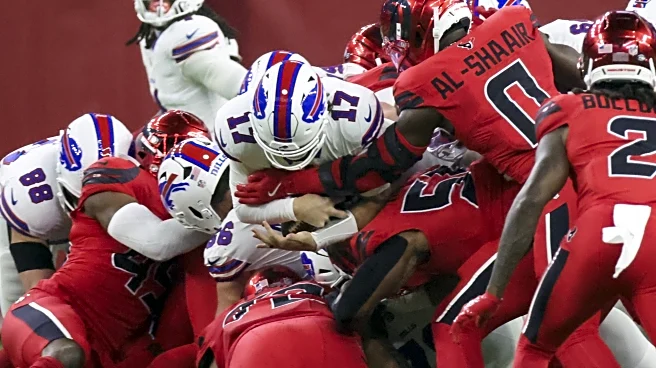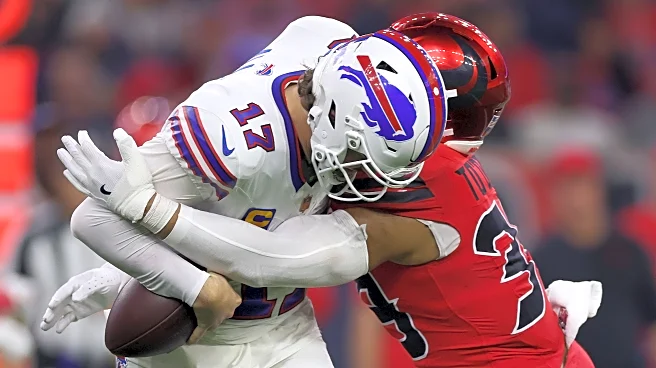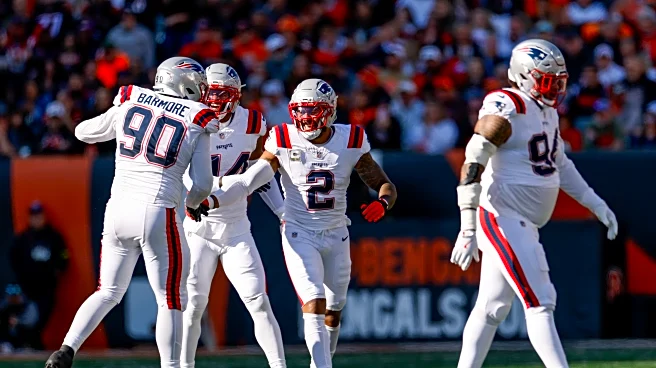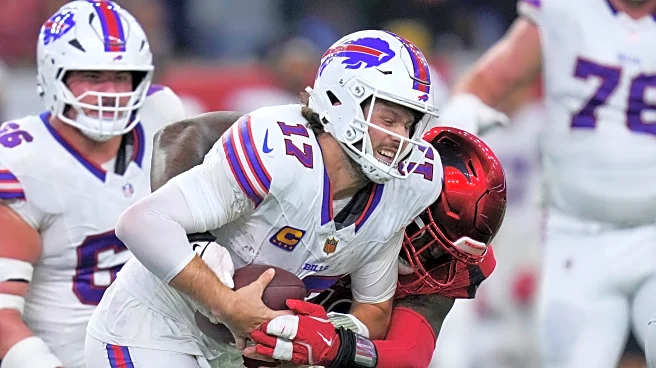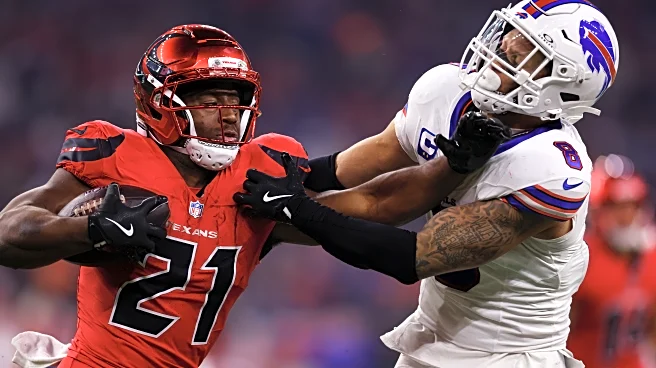The Buffalo Bills haven’t had much success in Houston, and that trend continued during an ugly Thursday Night Football “performance.” Down four at the half, the defense clamped down after the break and only allowed three additional points. The offense had six drives to work with and only came up with three of their own points.
Having the game within striking distance for so long and seeing the futility is one of the worst feelings. If it weren’t for penalties, the game may not have been so close.
Standard and Advanced Metrics
Penalty counts

This game is a good illustration of the natural flow of most games. It felt like there were a ton of flags, but both teams hovered within the realm of normal. In this measure, Buffalo appears to have gotten the worse of it from the officiating crew, but I wouldn’t have invented a proprietary metric to red flag the yellow flags if I thought that these numbers told the whole story.
Penalty yards

Using the league data (left hand bars) for assessed yards, the Bills are still falling behind the Texans. Not drastically, and almost perfectly in line with league average. As we drift toward more advanced measures that will lead to my proprietary Harm stat, we see that the true yards start to indicate there might be some deeper things going on.
True yards adds in yards impacted or negated by penalty in addition to what the box score shows from assessed. The Bills added one yard in this manner, but the full story is a bit more complex (see below). The Texans impacted a whopping 30 additional yards — a 75% shift in the total.
Penalty Harm
Houston Texans

For anyone joining us for the first time, penalty Harm is a “red flag” system for the yellow flags. Numbers aren’t intended to be absolute in nature (a 2 does not mean twice as bad as 1 for instance). Higher spikes are meant to show flags more worthy of scrutiny due to a higher likelihood of impact. By factoring in lost yards, downs, and points the idea is to create a stat that highlights some quick context.
For the Houston Texans, you can see there’s one flag we have to talk about and it’s not the delay of game, false start, or ineligible downfield pass by offensive tackle Tytus Howard. For quick hits, the other ineligible downfield pass by center Jake Andrews wiped out an eight-yard pass on top of the five yards assessed. The holding call on offensive tackle Trent Brown wiped out a seven-yard scramble. Now on to the obvious one…
You likely remember the illegal blindside block by defensive end Derek Barnett. It (thankfully) wiped out the scoring portion of Josh Allen’s pick six. It also wiped out 15 yards of the interception return. For the formula lovers, that’s 15 yards + 15 yards + 7 points; 1.5 + 1.5 + 7.0 = 10.0 Harm.
Remember the idea behind Harm: We’re looking to identify the likelihood of impact on a particular flag. This one took away seven points from the Texans. In terms of Harm, that’s meaningful as it allowed the Bills the chance to prevent a touchdown. A strong defensive series from Buffalo kept the Texans to a field goal, meaning this flag did result in a four-point swing in favor of the Bills. If the initial score stood, that would have still kept the margin to a one-score game, but a touchdown and two-point conversion to tie rather than a touchdown or even two field goals for a win.
Houston had a total of 14.0 Harm, which is above the 10.0 threshold for our bad day cut off.
Buffalo Bills

On the surface, Buffalo had a relatively good day on flags, with only 6.5 total Harm. I’ll focus on just a couple penalties as some of these are frankly depressing (hello Dion Dawkins’ false start).
Defensive back Jordan Hancock’s holding flag on the Texans’ opening punt wiped out the eight yards of wide receiver Khalil Shakir’s return. But wait? I said above that the Bills only had one yard impacted on top of their assessed. What’s the deal?
The deal is on defensive back Cam Lewis’ offensive holding call. Also occurring on a punt, Lewis was flagged for holding at the 19-yard line. Shakir fielded the punt and… lost seven yards. Houston accepted the flag, which was half the distance to the goal or 9 yards. By doing so, they eliminated the loss of seven on Shakir’s punt.
The final one I’d like to discuss was the offensive pass interference by wide receiver Gabe Davis. Let’s take a look then discuss.
I don’t usually talk too much about declined penalties, let alone make them my feature, but I’ve heard a lot of chatter this week about how tight end Dawson Knox was open for the touchdown. Great. You know what wouldn’t have counted? The touchdown. That’s an obvious OPI on Gabe Davis. At best, you get to replay the down, but now it’s 4th & 16 instead. I would also like to point out that while a throw to Knox is a good option on this play, it also isn’t likely a touchdown since the guy Davis blew up on the OPI would have been there to tackle Knox short of the end zone.
While we’re dissecting this play, it’s not penalty related but Allen looked to be trying to hit wide receiver Josh Palmer. Palmer, upon seeing the ball thrown, completely changed his route. Instead of crossing the field to where the ball was, he aggressively planted his foot and drove to the end zone.
I want to be clear that his original trajectory was to exactly where the ball was going. Would the timing have worked out as well as I’d hope? It’s hard to tell, but I can say with 100% certainty that running 90 degrees away from the ball didn’t help. This, too, would have been called back — but if we’re criticizing the outcome let’s put all the cards on the table.


